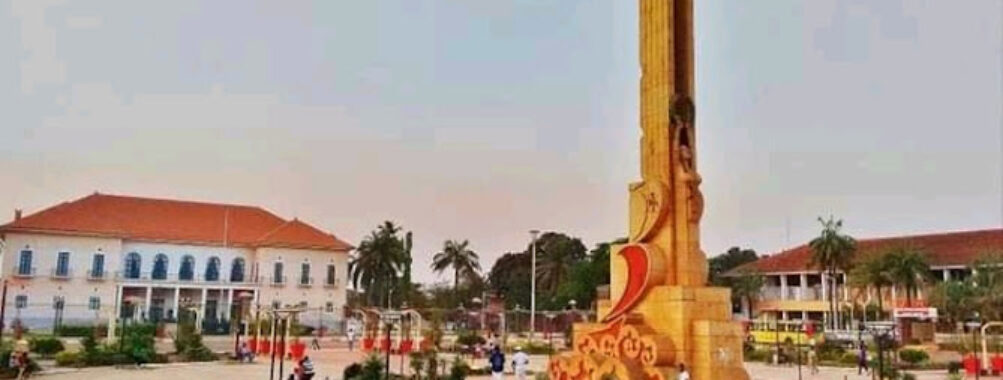
Bissau
Table of Contents There’s something quietly magnetic about Bissau, the capital of Guinea-Bissau. It’s not the type of city that tries too hard to impress—it simply exists in its own rhythm, slow and unhurried, shaped by the tides of the Geba River and the salty breath of the Atlantic. The city feels like a time capsule, where the past and present have decided to coexist rather than compete. Colonial-era buildings stand shoulder to shoulder with modern markets, their faded facades telling stories of a Portuguese past that still lingers in the air like the smell of roasted peanuts from a street vendor’s cart. I remember the first time I walked through Bissau Velho, the old quarter. The streets were narrow, uneven, and alive with chatter. Kids played soccer barefoot, and old men sat outside cafés sipping strong coffee, arguing about football and politics in a mix of Creole and Portuguese. The architecture—crumbling yet oddly beautiful—seemed to whisper stories from another century. It’s not polished, not curated for tourists, and that’s exactly why it feels so real. You can sense the resilience of the people here, their humor and warmth shining through the wear and tear of their surroundings. And then there’s the fort—Fortaleza d’Amura. You can’t miss it. It’s still used by the military, so you can’t wander freely inside, but even from the outside, it holds a certain gravitas. The walls are thick, weathered by time and tropical rains, standing guard over a city that’s seen its share of upheaval. Just a short walk away, the old Presidential Palace stands in quiet defiance. Its neoclassical façade, scarred by war, feels like a monument to endurance. There’s a melancholy beauty to it, a reminder that Bissau has endured and continues to rebuild, one day at a time. Bissau isn’t a city of grand attractions or postcard-perfect sights. It’s a place that grows on you slowly, like a song you don’t fully appreciate until the third or fourth listen. The people, the rhythm of daily life, the smell of the ocean mixed with dust and diesel—it all becomes part of the experience. And if you’re the kind of traveler who values authenticity over gloss, Bissau will probably steal a piece of your heart before you even realize it. The best time to visit Bissau is between November and April, during the dry season. The weather is warm but not unbearably humid, and the skies are usually clear. You’ll find it easier to explore the city without worrying about sudden downpours or muddy roads. That said, there’s something oddly poetic about the rainy season too—the city turns lush and green, and the air feels fresher. If you don’t mind a bit of rain, you might even enjoy the quieter, slower pace that comes with it. Personally, I love visiting around late February or early March. The city feels alive with energy, and local festivals start to pop up. Music fills the air, and the streets seem to hum with anticipation. It’s the perfect time to see Bissau’s cultural side in full swing—colorful parades, traditional dances, and the kind of community spirit that’s contagious. Reaching Bissau is relatively straightforward, though it might take a bit of patience. Osvaldo Vieira International Airport serves as the main entry point, with flights connecting from Lisbon and a few other West African cities. If you’re coming from Europe, Lisbon is usually the easiest hub to connect through. The airport itself is small, and things move at their own pace—so don’t expect the efficiency of a big international terminal. But that’s part of the charm, really. Once you step outside, the warm, humid air hits you, and you know you’ve arrived somewhere different. Getting around the city is an adventure in itself. Taxis are common and fairly affordable, though haggling is part of the game. There are also shared minibuses—called “toca-tocas”—that run along set routes. They may not be the most comfortable option, but they’re a great way to experience local life. If you’re feeling brave, rent a motorbike and explore at your own pace. Just keep an eye out for potholes and the occasional wandering goat. For those planning to explore beyond Bissau, roads can be rough, but the countryside is stunning. The Bijagós Archipelago, a collection of islands off the coast, is worth every bump along the way. It’s like stepping into another world entirely—untouched beaches, wildlife, and a sense of isolation that’s rare these days. Traveling to Bissau isn’t like going to Paris or Cape Town—it’s more unpredictable, but that’s exactly what makes it special. Here are a few tips that might make your trip smoother (and a lot more enjoyable): One thing I wish someone had told me before I went: Bissau rewards curiosity. Don’t just stick to the main sights. Wander. Talk to people. Try the street food even if you’re not sure what it is (within reason, of course). Some of my best memories came from unplanned moments—like being invited to a local wedding celebration or sharing a cold beer with fishermen at sunset. Those are the experiences that stay with you long after you’ve left. Sure, Bissau has its challenges. Infrastructure isn’t perfect, and sometimes things don’t go according to plan. But if you approach it with an open mind and a sense of adventure, you’ll find a city that’s full of character, history, and heart. It’s the kind of place that doesn’t just show you its beauty—it makes you earn it. And somehow, that makes it even more rewarding. So, if you’re the type of traveler who likes to dig beneath the surface, who doesn’t mind a few bumps along the road in exchange for genuine connection and discovery—Bissau might just surprise you. It’s raw, real, and quietly unforgettable.Description
Key Features
Best Time to Visit
How to Get There
Tips for Visiting
Location
Places to Stay Near Bissau
Find and Book a Tour
Explore More Travel Guides
No reviews found! Be the first to review!